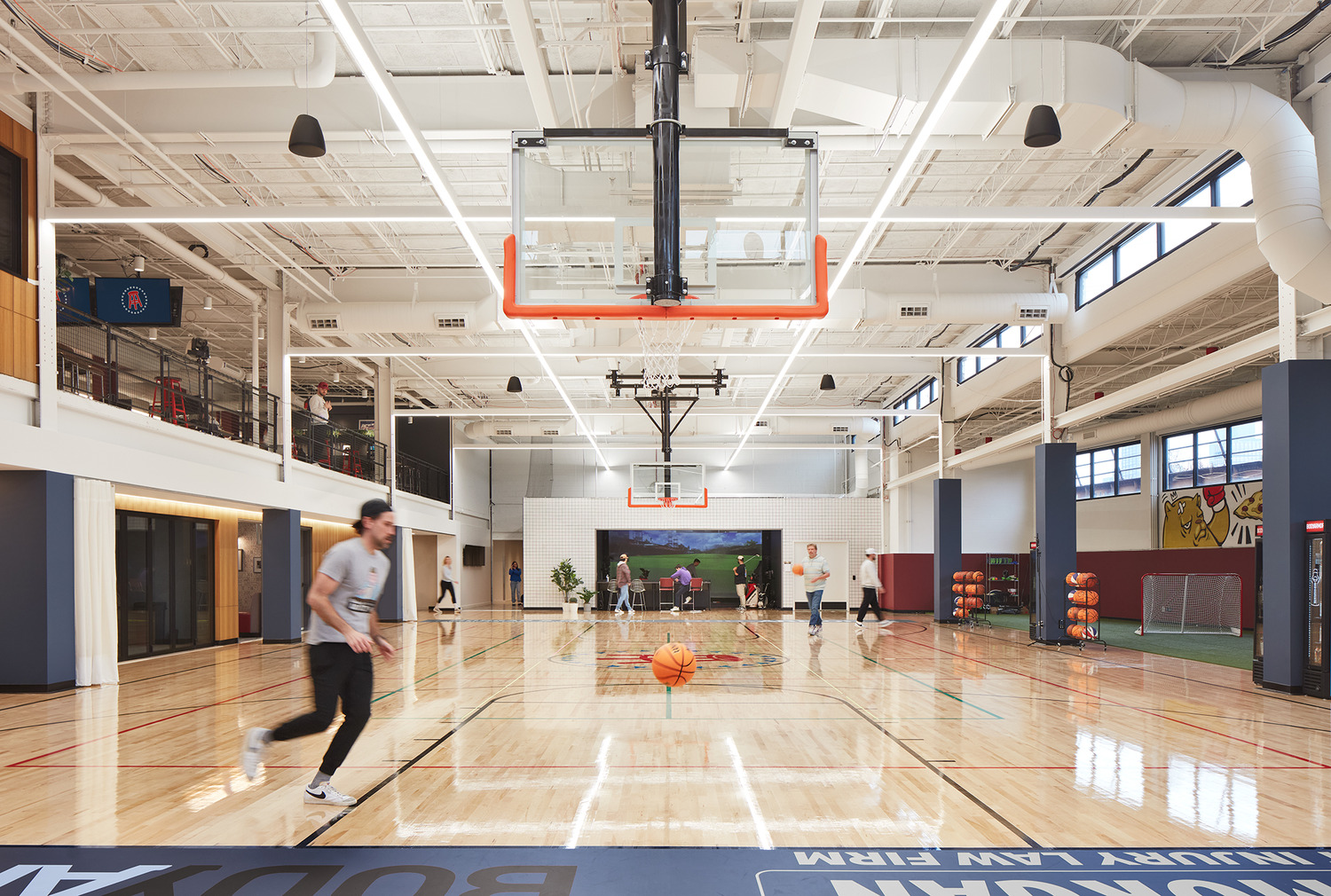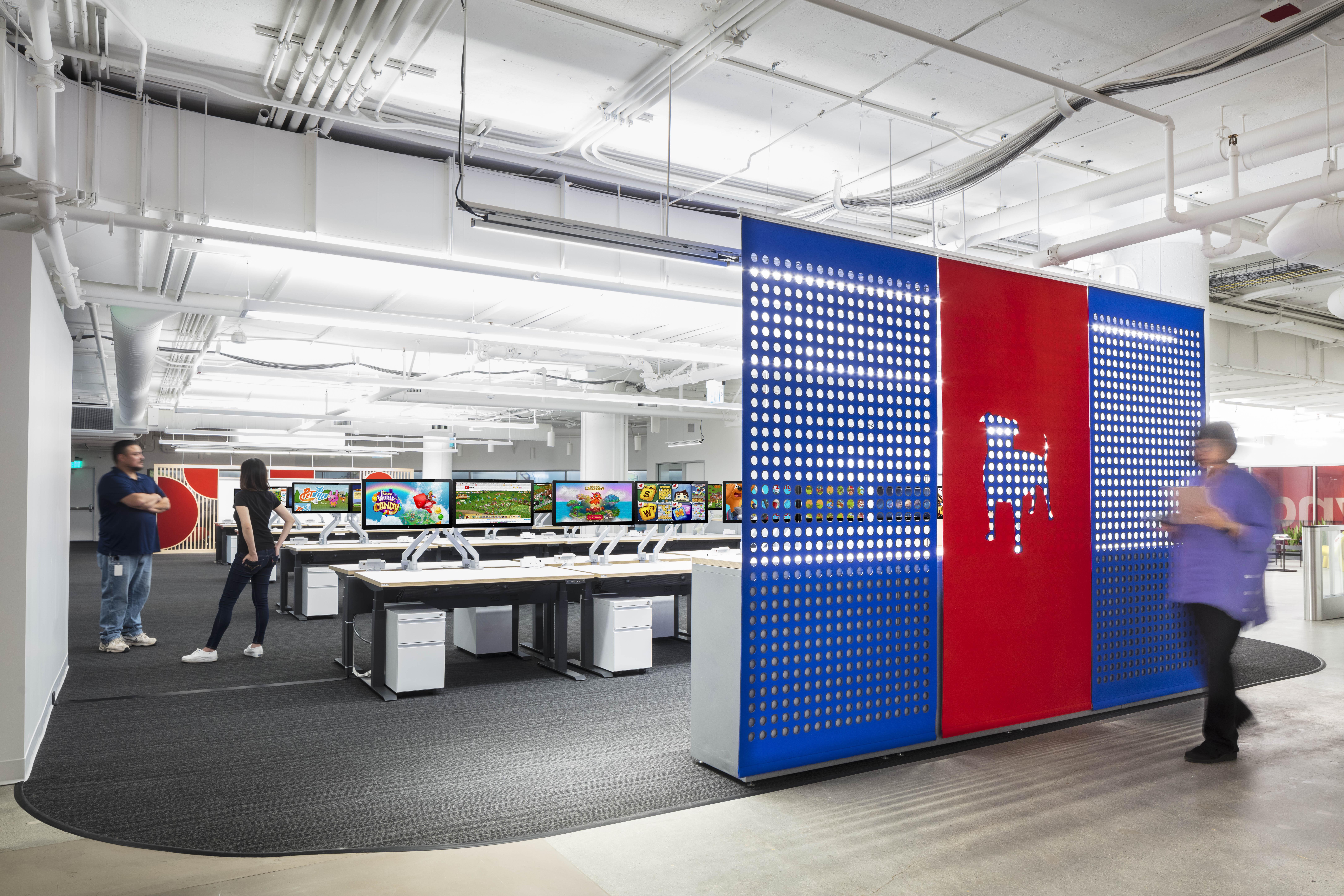


01 December 2021


By: Colin O’Connell – Vice President, Project Executive
With average screen time continually on the rise, it’s no secret that the demand for various forms of virtual entertainment is at an all-time high. Virtual gaming and e-sports are no exception. Dentsu International reports that nearly half of consumers enjoy watching e-sports as much as live events. It’s predict that by 2028, the FIFA eWorld Cup will be the most watched sporting event on the planet.
As a hub for video game development, the San Francisco Bay area is home to many technology companies housing game programmers and designers. Constructing the offices that house this production requires a niche understanding of what is needed to maximize employee comfort and efficiency.
Mobility is a Must
Gaming companies need to be able to change their space as quickly as their technologies evolve. Some major trends include plug-and-play furniture and mobile conference rooms. The client’s goal is to have the space meet the employee needs of the day, while Clune’s goal is to achieve this in a safe and aesthetically pleasing way.
To utilize this type of mobile furniture, which is often on wheels, the end user needs to have access to power and data, no matter where they are. One of the main challenges with this is avoiding unsightly wires and trip hazards. To combat this, Clune has made a standard practice of creating over double the traditional amount of cores to provide necessary flexibility. Where this isn’t possible, teams employ alternative solutions, such as connectrac, a non-invasive, floor-based solution that easily brings power where it’s needed.
Amenities as a Core Feature
Clune’s gaming client’s spaces have a lot in common, but the most overwhelming similarity is the need for top tier amenities. While the perks offered are often more commonly associated with financial traders, these companies are rolling out the red carpet to keep employees’ needs met. This requires careful planning during construction to ensure maximum usability.
Our San Francisco team has constructed coffee bars with a full-time barista, restaurant-style kitchens and cafeterias, as well as micro-kitchens or pantries where employees can grab a quick snack and have full meals delivered to their desks. Many of these offices have gyms and full bars, but recent build-outs also offer new trends including quiet rooms, yoga studios and meditation spaces.
Open Plan and Ideal Lighting
In addition to requiring these amenities, gaming companies also have unique layout and lighting needs. The spaces have more of an airy, industrial feel, than a standard tenant improvement. They also have significantly fewer private offices and closed spaces, opting instead for an open workstation floorplan or ‘pod’ style seating.
Because many of the employees sitting in these open areas are programmers, lighting is one of their top concerns. The visual fatigue that can be caused from intensely focusing on a screen for multiple hours on end, and can be significantly exacerbated if the correct overhead lighting is not utilized. Clune works with the clients and designers to install specific fixtures and bulbs to help protect employees. These fixtures are based off the type of programs and screens employees use on a daily basis.
Critical Infrastructure & Testing
The intense processing power needed to create video games comes with the need for more intense MDF and IDF rooms. There are various approaches to these build-outs, from one major room to a smaller closet on each floor, but the common goal is zero down time.
In various phases of development, the client needs to be able to source feedback from the end users or gamers. To serve this purpose, the offices are typically equipped with testing rooms. These rooms are split by a two way mirror and are completely sound proof so gamers can be observed and feedback can be recorded, without being influenced by outside noise or conversation.
Like every industry, gaming is experiencing changes. As a result of the COVID-19 pandemic, these companies have to take a look at where hybrid work schedules fit into their business model and how to safely provide the amenities their employees have come to expect. However, even with all of these changes, one thing is for sure – the growth isn’t slowing down anytime soon.